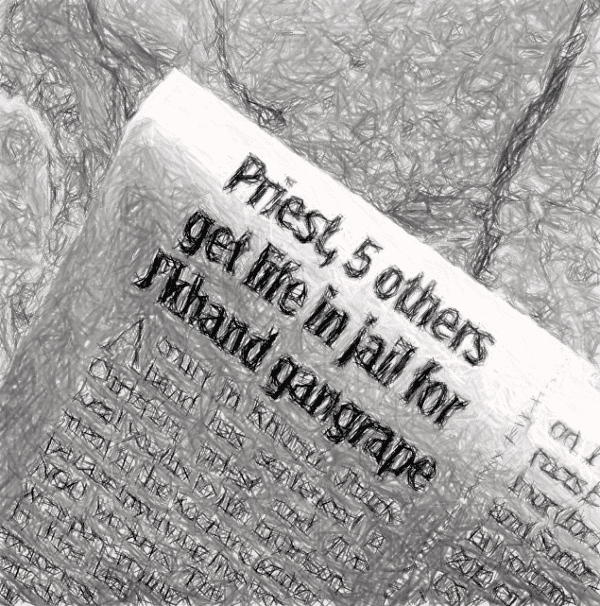
In 2012, a young woman was brutally gang-raped by a group of five men on a bus in New Delhi, India. She and her male companion, who had been knocked unconscious, were then thrown from the moving bus and found on the side of the road. The extreme violence of the assault turned the case into an overnight firestorm both within the country and in the international press. Despite this publicity—which only increased when she died of her injuries—and the guilty conviction of all five men, the Indian press did not publish her name. Instead, they predominately referred to her as “Nirbhaya,” meaning fearless one, or as the Delhi braveheart. Her name was omitted from press coverage not because people did not know who she was—“the train of media persons and politicians to her home made clear almost every person in the vicinity … knew where she lived and what her real name was”—but because to publish her name would be against the law (Bhatnagar, 2016).
Section 228-A of the Indian Penal Code essentially prohibits anyone from publishing the name of a sexual assault victim—unless it is done as part of the criminal investigation, or is authorized in writing by the victim or by their family should the victim be deceased, a minor, or of “unsound mind”—under penalty of up to two years in prison (IBNLive, 2013). The Delhi case highlights the world of potential tensions and contradictions in the law. In fact, Shashi Tharoor, the Union Minister of State of Human Resources, wanted to name an anti-rape law after the Delhi victim, but could not do so for fear of punishment under Section 228-A (IBNLive, 2013). While the law is, of course, meant to protect victims of assault from further trauma, the ethical intent is not matched by practical outcomes and potentially reifies notions of shame directed toward victims.
The victim’s father eventually came forward and revealed her name to the foreign press because he and his wife “want[ed] the world to know her real name” because she “didn’t do anything wrong;” they hoped “revealing her name will give courage to other women who have survived these attacks” (Bhatnagar, 2016). However, because he did not give written authorization through the channels specified by the law, her identity was still artificially hidden, even while her name and face covered the internet. Thus, her mother reiterated that they wanted the victim’s name to be known stating, “whoever has suffered should not hide their name … everyone should know her as Jyoti Singh” (Bhatnagar, 2016).
The same penal code section also prohibits journalists from revealing any other potentially identifying information about victims of sexual assault. For example, the Times of India reported on an alleged assault of a young woman near Hauz Khas Village and revealed “the name of the neighborhood where the victim lives as well as what she does for a living and the area in which she works” (Khullar, 2017). Again, the protection of such personal information intends to keep victims from breaches of privacy and further violence. Yet, some say hiding the victims keeps police from being accountable when they fail to protect women. Swati Maliwal, chairperson of the Delhi Commission for Women, used a victim’s name in an attempt to shame the police. Maliwal echoed the Singhs saying, “why shud [sic] rape victim hide her identity? Shouldn’t rapists be hiding? Is it the shame of a victim that she was subjected to cruelty?” (Bhatnagar, 2016).
Still, there are those who argue that even if the victim, under Indian law, has waived their right to anonymity, reporters should still use their judgment to decide whether naming the victim is appropriate. Bob Steele, a journalism professor at DePauw University, argues that reporters should consider the resources available to victims and the counseling, guidance or other professional help they have received. Steele explains if he does not have this information “you won’t find their names in [my] column” (Khullar, 2017). Journalists in India are still struggling to find a way to balance interests in promoting public safety, holding authorities accountable, and protecting victim privacy.
Discussion Questions:
- What values or interests are in conflict in this case?
- Does the practice of protecting the anonymity of sexual assault victims save them from shame or perpetuate it?
- Under what conditions, if any, should journalists publish the names of victims? What do they need to know to make that decision?
- Is the law prohibiting the press from naming victims a justified restriction of press freedom?
- Which of these considerations, if any, should be extended to the naming of alleged perpetrators of sexual assault? What might be different in these cases?
Further Information:
IBNLive, “What the law says on a rape victim’s identity.” News 18, January 2, 2013. Available at: https://www.news18.com/news/india/what-the-law-says-on-a-rape-victims-identity-529485.html
Amanat Khullar, “The Indian media needs to rethink how it reports rape.” Herald, February 23, 2017. Available at: https://herald.dawn.com/news/1153682
Gaurav Vivek Bhatnagar, “Disclosing the identity of rape victim remains a grey area in the justice system.” The Wire, July 28, 2016. Available at: https://thewire.in/law/identity-of-rape-victims
Authors:
Dakota Park-Ozee & Scott R. Stroud Ph.D.
Media Ethics Initiative
Center for Media Engagement
University of Texas at Austin
November 4, 2019
This case was produced by the Center for Media Engagement with support from the South Asia Institute. It can be used in unmodified PDF form for classroom or educational settings. For use in publications such as textbooks, readers, and other works, please contact the Center for Media Engagement.
Ethics Case Study © 2019 by Center for Media Engagement is licensed under CC BY-NC-SA 4.0



